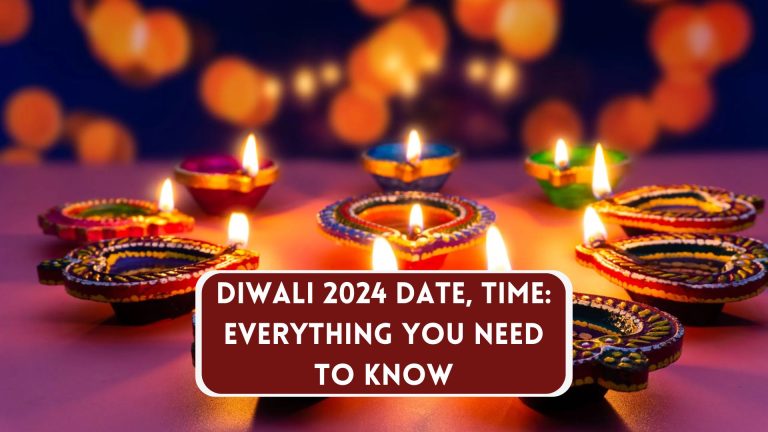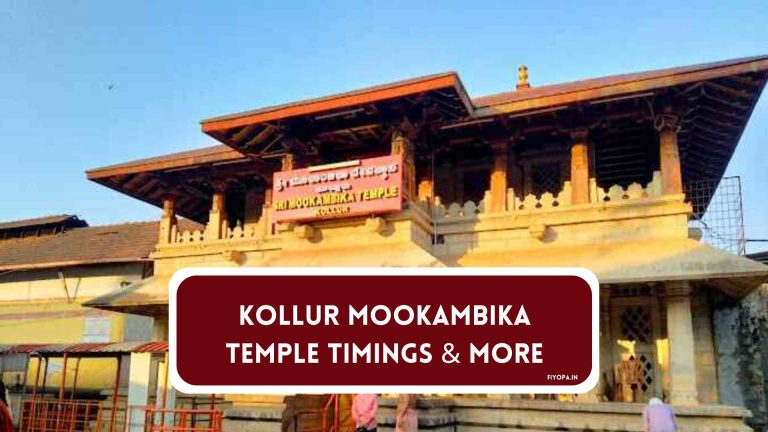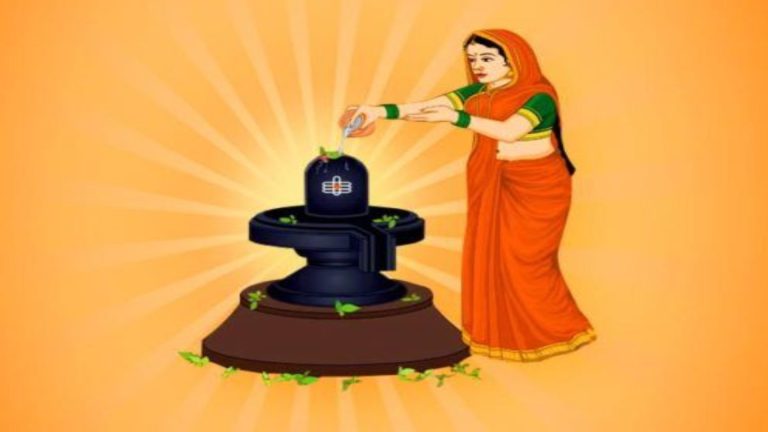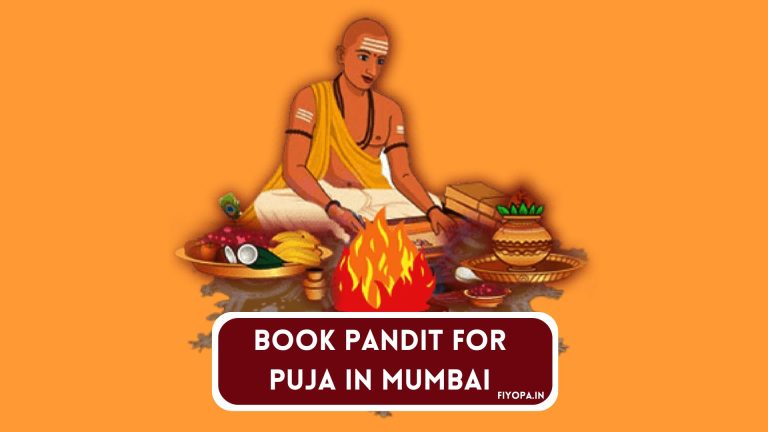Tirupati Temple Tirumala: TTD Online Booking, History, Timing & More
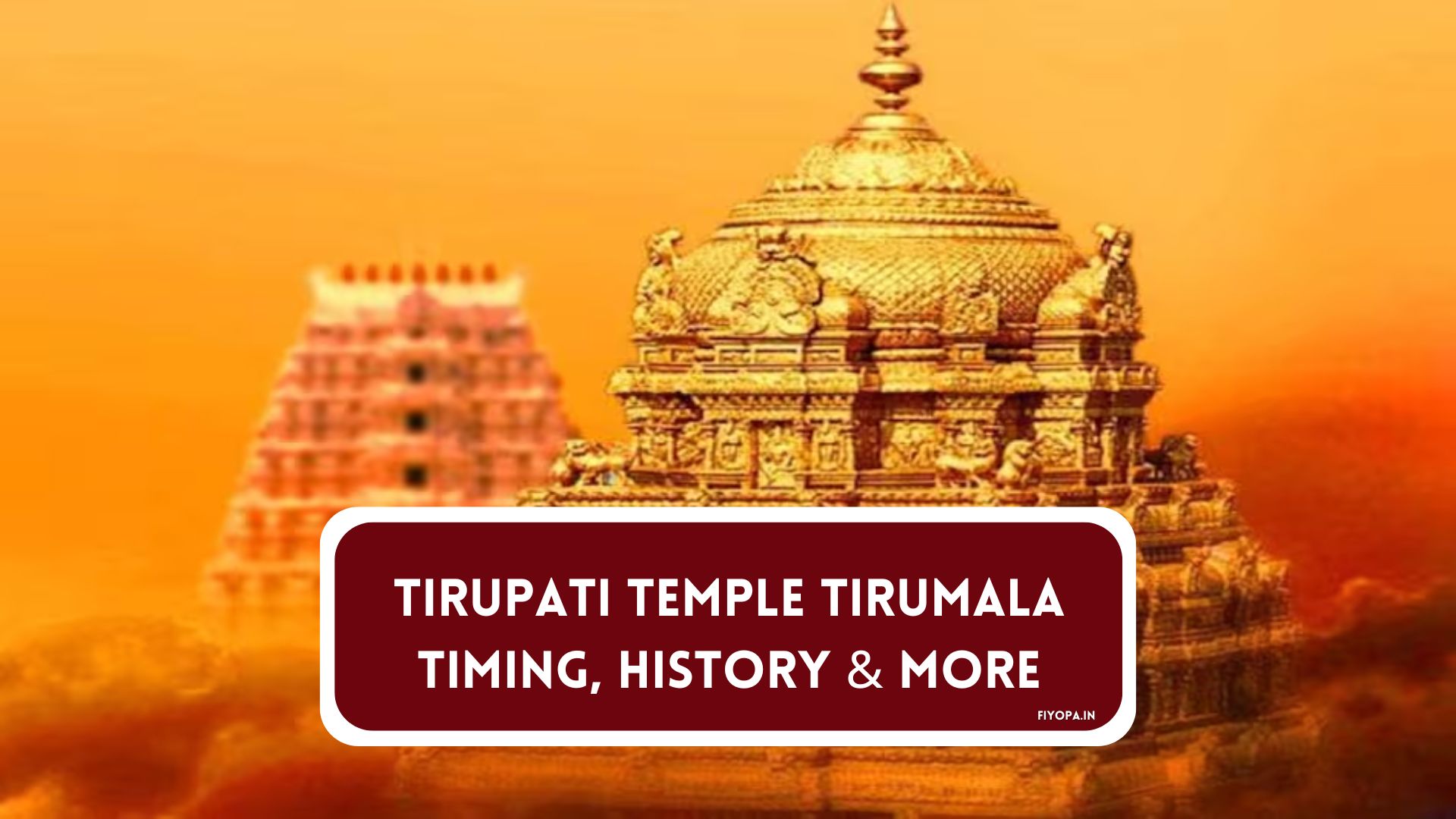
Tirupati Temple Tirumala Balaji Temple is one of the most well-known Vaishnavite temples anywhere in the world. It is located in Tirumala, Andhra Pradesh. The principal deity Lord Venkateshwara is believed to be an incarnation of Lord Vishnu. It is believed that he has been created to benefit the people in Kaliyuga.
The temple is located at the highest point of Tirumala hill, also known as Venkatadri. It is among the seven holy hills, also known as Saptagiri. Six hills comprise Seshadri, Neeladri, Garudadri, Anjanadri, Vrushabhadri, and Narayanadri.
It is the perfect moment to see the temple from September through March. Darshan times are between 3 am to 1 AM. Admission is free. VIP darshan costs Rs. 300 per person. elderly people can go at no cost. Visitors must wear traditional Indian attire. Important festivals that are celebrated in India include Brahmotsavam and Teppotsavam.
About Tirupati Temple Tirumala
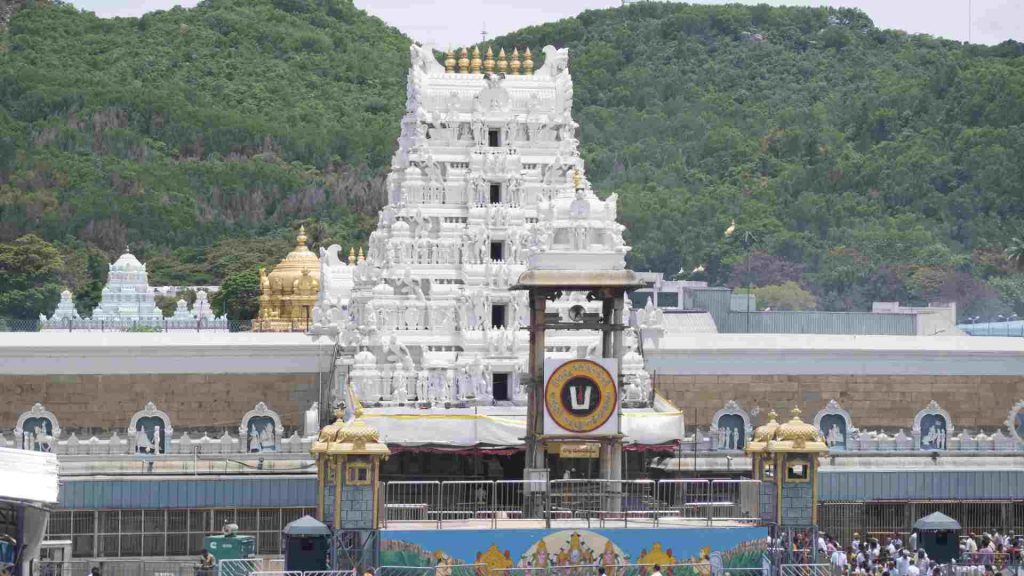
Tirumala Tirupati Balaji Temple is the most renowned Vaishnavite temple around the globe. It is located in Tirumala, Chittoor district, Andhra Pradesh. The principal god Lord Venkateshwara is believed to be the incarnation of Lord Vishnu.
It is believed that he has been sent to benefit the people during Kaliyuga. The temple is situated on the top of Tirumala hill, also known as Venkatadri. Venkatadri is among the holy seven hills (Saptagiri) in Hinduism. Other six hills include Seshadri, Neeladri, Garudadri, Anjanadri, Vrushabhadri, and Narayanadri.
TTD Online Booking Process
For pilgrims seeking to make the trek up Tirumala Tirupati temple, the TTD (Tirumala Tirupati Devasthanams) online booking procedure involves several steps and involves several steps for them as part of its online reservation procedure. Here is an outline of this procedure:
1. Navigating the TTD Website. TTD Site:
Visit the TTD Official Online Booking Portal: (https://ttdsevaonline.com).
2 Establish an Account or Sign In:
As a newly registered user, you must register using basic details about yourself such as name, email address, and mobile number.
Existing Users: Do you already have an account? Simply sign in using your username and password.
3. Select Seva Type/Service Details:
Select from various available options such as tickets for Darshan, Seva Tickets Accommodation, and Laddu Prasadam.
4. Select Date and Time Options:
Reserve the date and time that best suits your service, along with how many guests are permitted that day. Availability depends upon which service type is selected as well as number of attendees that day.
5. Submit Pilgrim Details Here:
Enter information for each pilgrim, such as their names, ages, and ID numbers; some services might require specific documents as proof.
6. Make Payment:
Complete the checkout process and pay the amount due, usually via credit/debit accounts, internet banking, or another method available online.
Confirm Booking Information Now:
After making the payment successfully, you will receive confirmation of your reservation containing a booking ID as well as other pertinent details. Make sure you either keep this confirmation in a file or print a copy for future reference.
8. Receive E-Tickets:
Tickets for darshan or other services will be sent directly to the email address that was registered when ordering, though you may need to bring valid identification when visiting the temple.
Follow Additional Instructions.
Check for directives or instructions from TTD upon arriving, such as reporting times and dress codes as well as any essential details such as times and contact numbers for reporting purposes.
Additional Tips: Book Early
It is best to make reservations early as slots often fill quickly during peak times.
Review the cancellation policy to ascertain if any adjustments or cancellations need to be made to your reservation.
For accurate and up-to-date information, visit TTD’s official website or reach out to their customer service.
Tirumala Tirupati Balaji Temple Timings
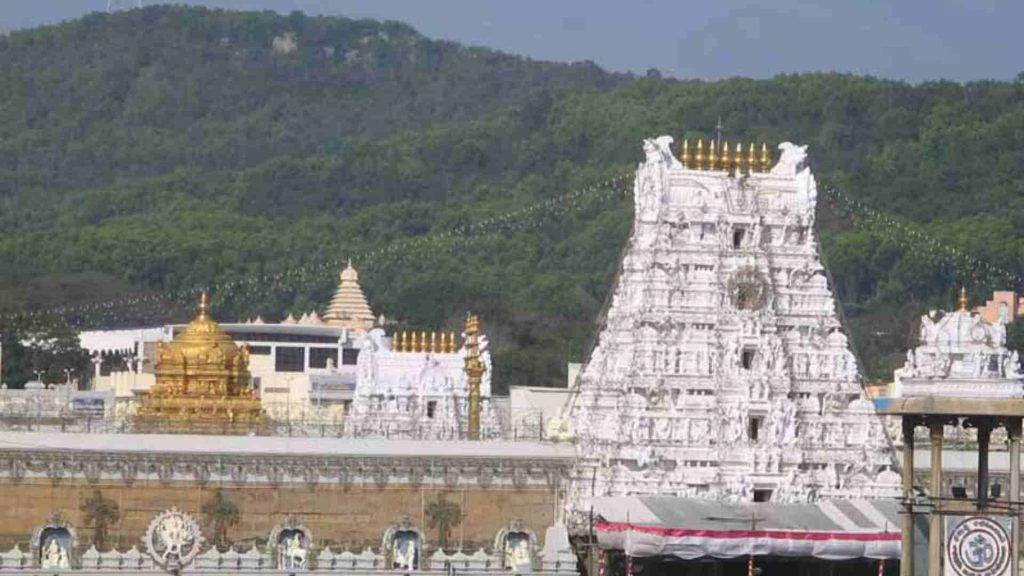
Its Tirumala Tirupati Balaji Temple is open at 3 am and closes at 1:30 am the following day. However, General Darshan is over at 1 AM. Below are the different kinds of Darshans as well as their times:
General Darshan (Sarva Darshanam):
This Darshan is suitable for all. The timings vary each day:
Monday Wednesday, Thursday, Saturday, and Sunday: 7:30 AM to 7:15 PM from 8 PM until 1 AM. Wednesday and Friday: 8:30 AM – 7 pm from 8 PM to 1 AM. Thursday: 8 AM until 7 PM and 8 PM until 1 AM.
VIP Darshan (Sheeghra Darshan):
This Darshan provides faster access to the area and costs 300 rupees per person. 300 per person. Pilgrims can book tickets in advance on the official website, www.ttdsevaonline.com. It is open all day long from 9 am to 3 pm.
Tirumala Darshan Walk (Divya Darshan):
This choice is available to pilgrims who wish to climb the hill to reach the temple. There are two ways to go: Alipiri Mettu and Srivari Mettu.
Special Darshans to Seniors:
Senior citizens are entitled to Darshan between 10:00 AM and 3:00 pm each day, but they have to show proof of the age of their guests.
Special Darshan For the Physically Disabled:
Physically challenged pilgrims may also take advantage of Darshan between 10:30 AM and 3 pm each day provided they show proof of their disability.
Infant Darshan:
Parents of infants younger than one year old can avail of the special Darshan.
Newly married couple Darshanand Amitaya:
Wedding couples who have just been married can take advantage of the Supadham entryway for an exclusive Darshan.
Tirupati Balaji Darshan Procedure
Pilgrims can visit one of three counters in the temple. The counters are situated at the Vaikuntha Queue Complex Rambagicha Complex, and Amenities Complex. The counters are where pilgrims can collect the Sudarshan wristbands for a minimal cost.
They will inform them when it’s time to meet God. In this way, pilgrims can avoid lengthy wait times and can visit their way around the Temple Complex while they wait. They will only have to join the line when they’re ready to go for Darshan.
Dress Code
The Tirupati Balaji Temple Devasthanam administration established a dress code for both genders beginning in 2013.
The men are expected to wear traditional dhotis or pajamas and a kurta or shirt. Women must wear a saree, or the Churidar pajama along with the curtain.
Poojas and Sevas at Tirumala Tirupati Balaji
This is a complete list of Poojas and Sevas in the Tirupati Balaji Temple. They’re separated into three kinds: Daily Sevas, Weekly Sevas as well as Periodical Sevas.
Tirumala daily Sevas
- Suprabhatam
The Seva takes place at 2:30 AM to awaken the Lord. After that, priests remove the idol from its sleeping location towards the principal temple. It costs about Rs. 200 per person.
- Thomala Seva
The Seva commences at 3:00 AM and runs for 30 minutes. The priests dress the idols in Tulsi as well as flower garlands. The pilgrims can watch the ceremony on Wednesday, Tuesday, and Thursday. Tickets cost the equivalent of Rs. 220 per person.
- Venkateshwara Sahasranama Archana
The Archana starts at 4:15 am. The devotees are required to recite the names of Lord Vishnu. Priests also bless devotees together with their names as well as Gothra. The Seva is offered on Tuesday, Wednesday, and Thursday. It costs 220 rupees. 220 per person.
- Ekantha Seva
The last Seva of the day begins at 1:30 am. Priests set the image in silver on top of a golden cot, with a mattress.
Tirumala Weekly Sevas
Vishesha Pooja on Mondays:
The Pooja begins at 7 am to 9 am. Pandit sings stotras and then does an Abhisheka. They put 14 Kalash full of oil, curd, milk, rice as well as holy water before the gods.
Ashtadala Pada Padmaaradhana on Tuesdays:
The Seva begins at 6:30 am until 7:30 am. Priests sing 108 names for Lord Vishnu every one of them with a Lotus flower. Also, people worship goddesses Lakshmi and Padmavathi. They are which is followed by Ratha Aarti. The cost of the ticket is about Rs. 2500 for 5 persons.
Sahasra Kalabhishekam on Wednesdays:
The ritual begins at 6:30 am and concludes at 8:15 AM. Priests load the silver vessels of 1008 and 8 Parivara vessels and a gold vessel, with things and put them in the central Mandapam. They recite Pancha Suktas and Shanti Mantras. The cost of the ticket is the sum of Rs. 5000 for six people.
Tiruppuvada Seva on Thursdays:
The Seva commences at 6:30 am. Priests take off all jewelry and flowers of the idol and dress the idol in the form of a Dhoti, and Uttareeyam. It costs about Rs. 5500 for six people.
Srivari Abhishekam, Fridays on the Internet:
The celebration begins at 4:45 AM and will end at 6 am. Priests bathe deities in the holy Ganga waters, and also the holy ghee, milk, sandals, and saffron. Tickets cost the sum of Rs. 750 per person.
History of Tirumala Temple
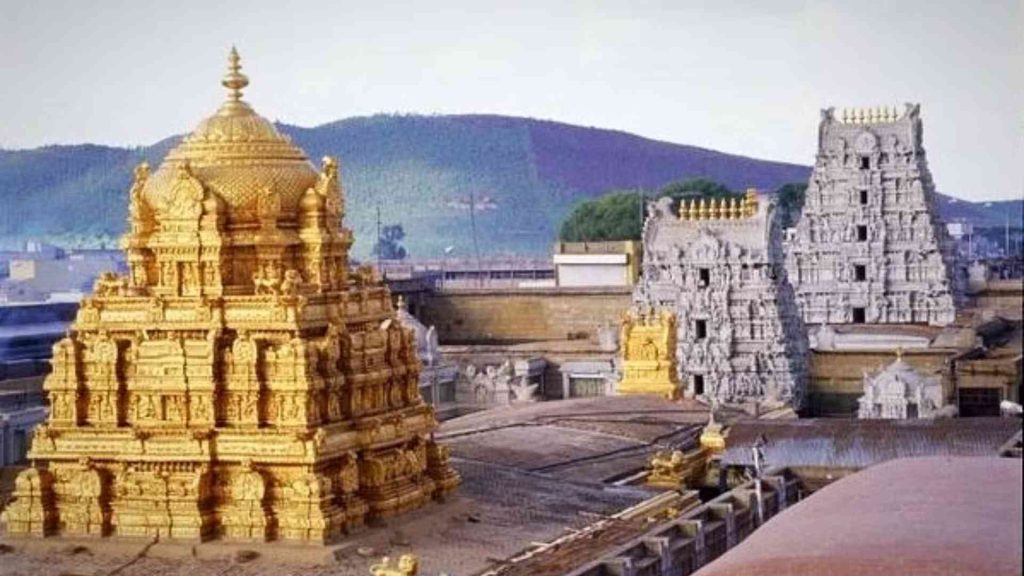
It is believed that the Tirumala Temple, sometimes referred to as the Venkateswara Temple is a well-known Hindu temple situated on the Tirumala Hills close to Tirupati located in Andhra Pradesh, India. The temple is committed to Lord Venkateswara who is a kind of Vishnu.
According to the legend it is believed that God came to these hills to benefit humanity through the tough time that Kali Yuga faced. Older texts, such as those of the Brahmanda as well as the Skanda Puranas mention the temple and its significance.
It was designed by various rulers, such as the Cholas between the 9th and the 13th centuries who were able to construct and increase the structure. In the Vijayanagara Empire, specifically during Krishnadevaraya’s reign in the 16th and 15th periods, the temple was subject to massive renovations and expansions which included the main sanctum as well as stunning halls for the temple.
Following the Vijayanagara time and the decline of the temple, it faced decay and financial problems, but it remained an important place of worship. The British government of the early and 19th periods helped in coordinating its administration.
In 1932, it was in the year 1932 that Tirumala Tirupati Devasthanams (TTD) was founded which led to the temple’s modernization as well as more acceptance. Nowadays, the Tirumala Temple is among the most frequented pilgrimage spots around the globe, renowned for its Dravidian design, as well as the intricate gopurams, as well as its golden Vimana, which is located over the main shrine.
Festivals celebrated at Tirumala
The Tirumala Temple has many events every year that showcase its extensive cultural and religious traditions. There are a few major celebrations that are celebrated in the temple:
1. Brahmotsavam: A major festival occurs from September through October and runs for nine days. It commemorates Lord Venkateswara’s heavenly wedding with lively processions and rituals, such as that of the Rathotsavam (chariot procession). People who are religiously inclined enjoy ceremonies, processions featuring the god on various cars, traditional dance, and music.
2. Vaikuntha Ekadashi: The festival is celebrated in December through January This important celebration honors Lord Vishnu. The day on which the god is believed to unlock the gates to Vaikuntha which is his home in heaven. A lot of pilgrims come to the temple for special prayers and ceremonies which include that of the Ekadashi procession.
3. Srinivasa Kalyanam: The festival is a celebration of the heavenly union of Lord Venkateswara and Goddess Lakshmi in Brahmotsavam. It is celebrated with a symbolic wedding ceremony, which is followed by a huge celebration.
4. Ugadi: celebrated from March through April, Ugadi marks the Telugu New Year. It is a temple that holds special pujas as well as a display of floral arrangements. The devotees ask for happiness and prosperity throughout the year.
5. Deepavali: also referred to as Diwali This festival takes place between October and November. There are special services as well as lighting fixtures and a variety of festive décor. The temple is bright and creates a stunning view for the devotees.
6. Adhyayanotsavam: Celebrated from December through January, this holiday is a time to recite the Tiruppavai along with other sacred songs. It is a time of devotion and includes particular prayers and chanting performed by devotees and priests.
7. Hanuman Jayanti: In March and April, this celebration marks Lord Hanuman. Although it’s smaller than Brahmotsavam and Brahmotsavam, it is a time to offer specific prayers and offerings for Lord Hanuman which symbolizes the strength and dedication of God.
They add to the spiritual ambiance at the Tirumala Temple and bring in thousands of worshippers eager to be part of its customs and ceremonies.
Tirumala Tirupati Balaji Temple Significance
It is believed that the Tirumala Tirupati Balaji Temple was erected to honor Lord Venkateswara who is a type of Vishnu. This temple is a significant one in Hindu religious and cultural practices. Lord Venkateswara often referred to as Balaji is regarded as the protector of the human race in this time of the Kali Yuga. The temple is considered sacred because the main god is self-created and this adds to its spiritual significance.
One of the more frequented places of pilgrimage in the world thousands of pilgrims visit every year to receive prayers and rituals. The temple displays a beautiful Dravidian architectural style, with intricate carvings as well as a golden Vimana that showcases the rich culture of South India. It has historically been an important place of worship and culture, gaining support from various dynasties, including that of the Cholas as well as that of the Vijayanagara Empire.
The temple also performs charitable activities, providing meals for free, education as well as healthcare services via its Tirumala Tirupati Devasthanams (TTD). The temple’s money, which comes through donations, is used to fund religious and social projects. Many myths connect the temple to divine intervention which strengthens the faith that god’s grace is divine. The temple is seen by many as a space to fulfill their desires and goals in spiritual terms, making it a vital religious and cultural place.
Conclusion:
It is believed that the Tirumala Tirupati Balaji Temple is regarded as an impressive testimony to the rich historical and spiritual legacy of India that draws hundreds of thousands of people from around the world. It is situated in the tranquil scenery in the Saptagiri hills, this holy place not only gives the most beautiful experience but gives insight into the country’s deeply rooted customs. The temple’s darshan times are flexible and access to all guests as well as free entry to seniors The temple makes sure that all can enjoy its sacredness.
Additionally, by following customary dress codes, visitors help preserve the holy atmosphere that is a part of the temple. We encourage you to go on a journey of spirituality to Tirumala and witness the tremendous devotion which pervades this renowned shrine.
Related read:- Sri Prathyangira Devi Temple: Timings, History, Entry Fee & More
FAQs:
The Tirumala Tirupati Balaji Temple is situated on Tirumala Hill in Tirupati, Andhra Pradesh, India. It is part of the Saptagiri (Seven Hills) range.
Lord Venkateswara, also known as Balaji, is believed to be an incarnation of Lord Vishnu sent to benefit humanity during the Kali Yuga. The deity is considered self-manifested, which enhances the temple’s spiritual significance.
The temple is open from 3 AM to 1:30 AM the following day. General Darshan is available from 7:30 AM to 7:15 PM on certain days, and VIP Darshan is available from 9 AM to 3 PM.
Pilgrims can book darshan tickets through the official TTD website (https://ttsevaonline.com). The process involves registering or signing in, selecting the type of seva, choosing the date and time, entering pilgrim details, making payment, and receiving e-tickets via email.
Visitors are required to wear traditional Indian attire: men should wear dhotis or pajamas with a kurta or shirt, and women should wear sarees or churidars.


